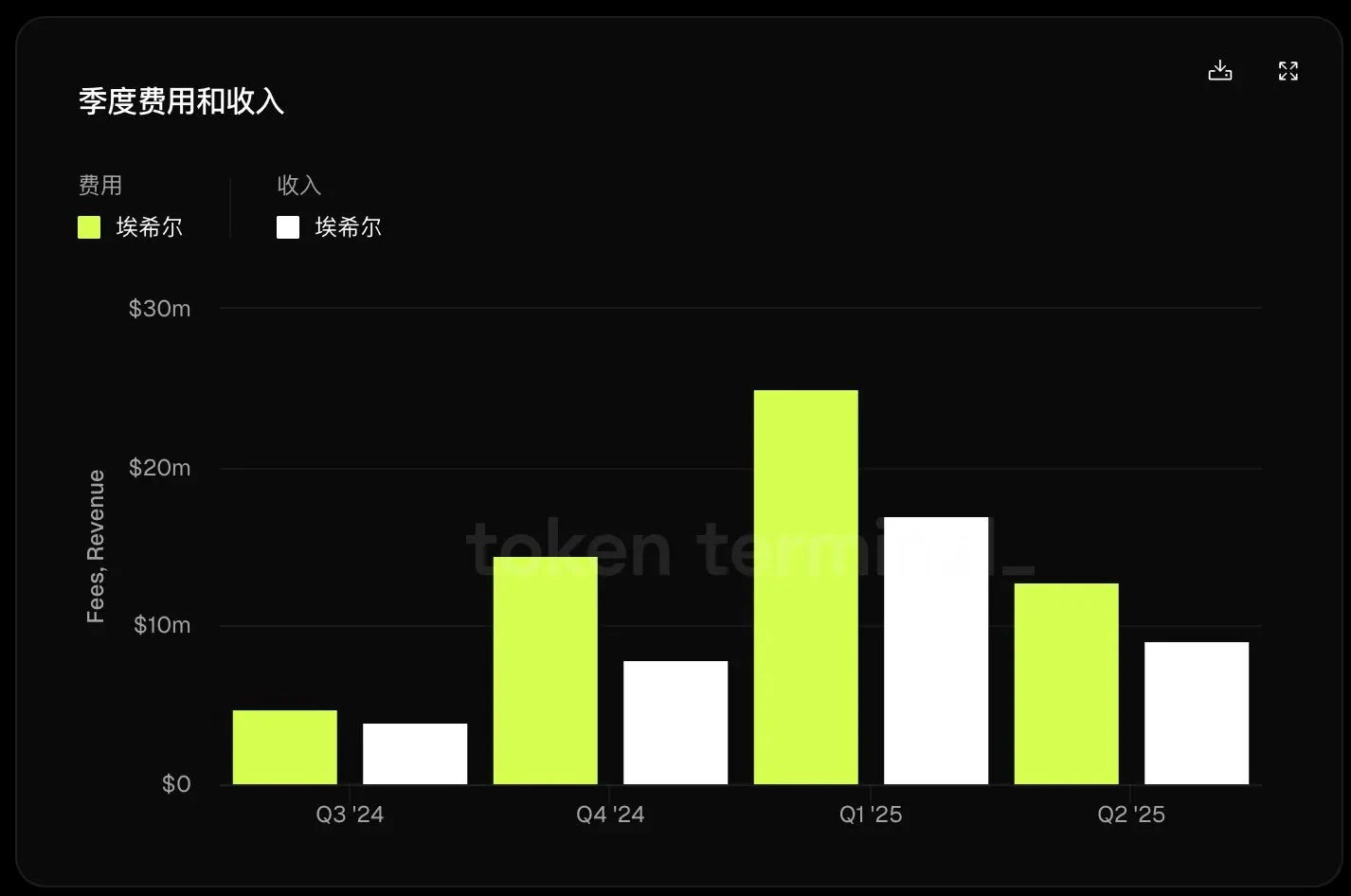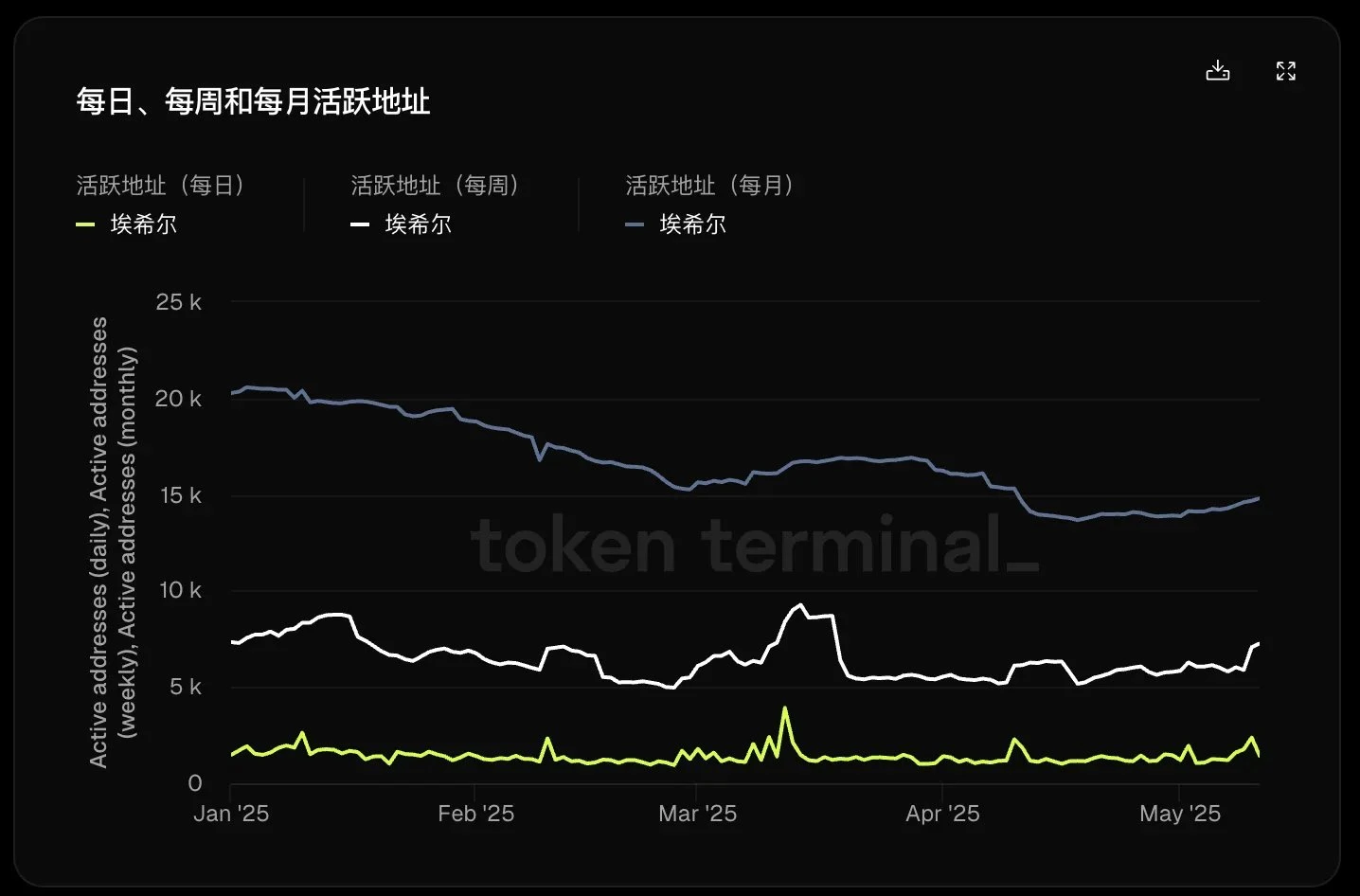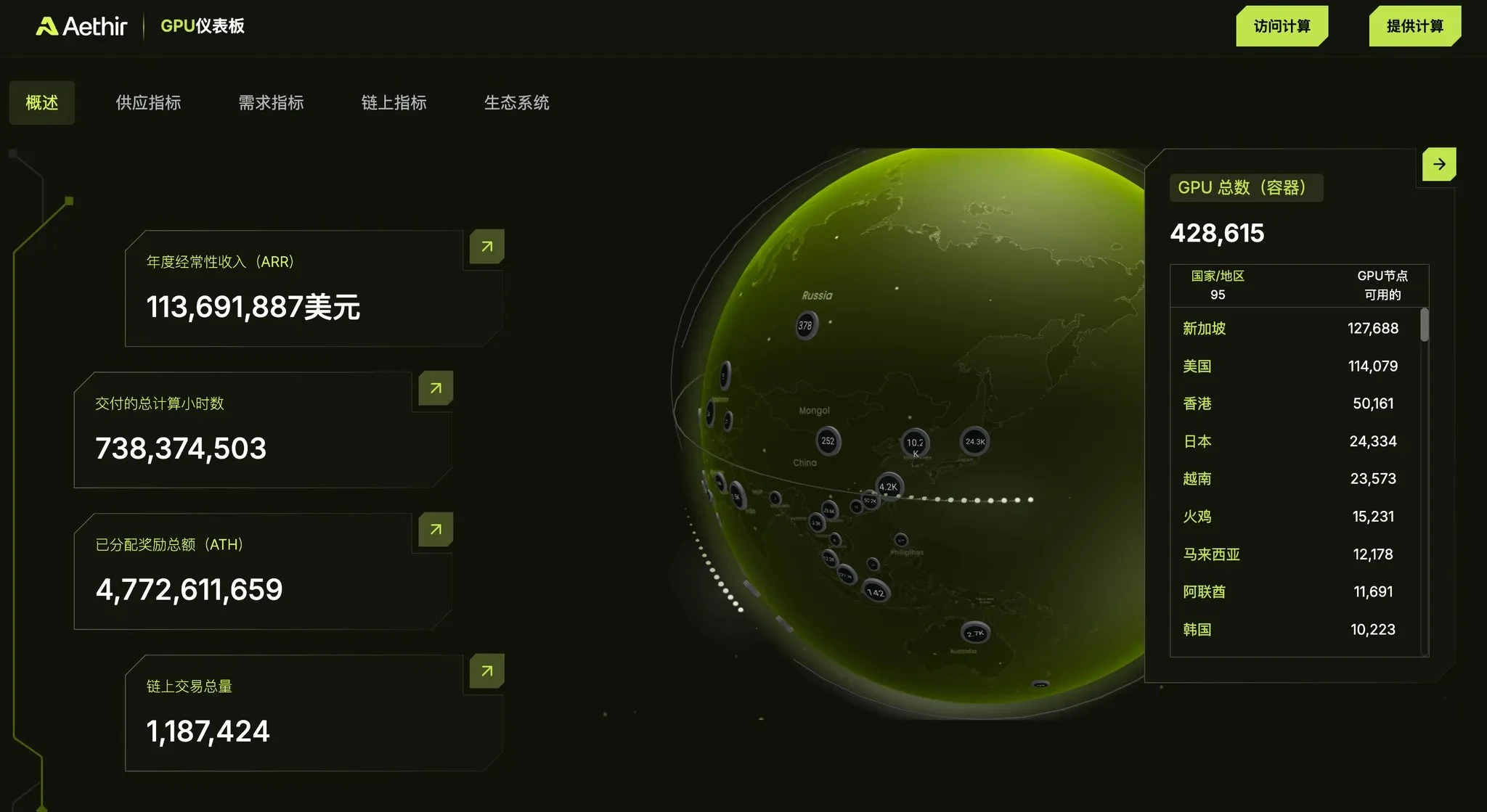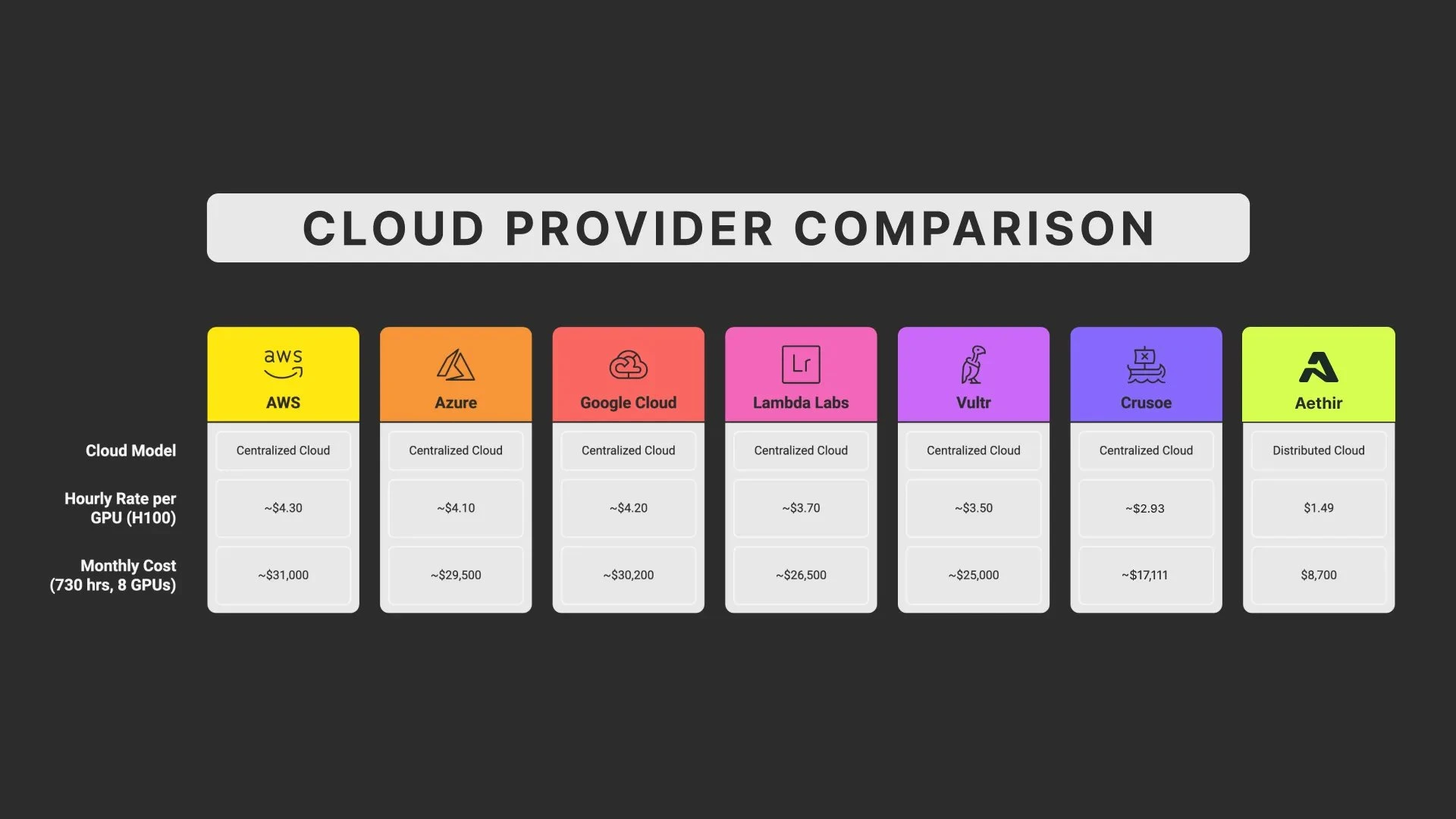Original author: Yue Xiaoyu (X : @yuexiaoyu111 )
I have talked about Aethir, the leading project in the decentralized computing power track, many times. It is a project I focus on.
Aethir’s recently launched Eigen ATH Vault allows community users to participate in revenue sharing on its decentralized GPU network by staking ATH tokens.
This time, lets analyze this project from a data perspective to help you analyze whether this project is worth participating in. @AethirCloud @AethirMandarin
1. Aethir’s core data analysis
According to information disclosed by Token Terminal, Aethirs cumulative expenses have reached US$55 million, and its annualized revenue is approximately US$110 million.
This revenue level is impressive in the decentralized physical infrastructure network (DePIN) field. In comparison, competitors like Render Network only have annual revenue of about $40 million.
Aethirs network covers 95 countries and has 425,000 enterprise-grade GPU containers, with obvious scale advantages.
Lets look at some core data:
(1) Quarterly revenue and expense conversion rate:
According to the quarterly expense and revenue chart provided by Token Terminal, in the second quarter of 2024, Aethirs expenses were US$25 million and its revenue was US$20 million, with the ratio of expenses converted to revenue reaching 80%.
This conversion rate shows that Aethir is quite profitable, but 20% of the fees are still spent on network maintenance and community incentives.
In comparison, centralized cloud services like AWS usually have operating costs accounting for up to 40%. Aethirs decentralized model does have advantages in cost control.

(2) Daily active addresses and user growth:
At the beginning of 2025, Aethirs daily active addresses stabilized between 5,000 and 7,000, an increase of about 30% year-on-year.
This growth trend is inseparable from the boom in Web3 games and AI applications.
In 2024, the global cloud gaming market grew by 20% to $5 billion, while the AI training market also grew by 25% and is expected to reach $300 billion by 2027.
Aethirs user growth shows that it has seized an opportunity in high-performance computing demand.

(3) Network size and governance structure:
Aethir’s network has over 91,000 Checker Nodes held by over 22,000 community members.
This decentralized governance approach reduces the risk of single point failures, and the operational risk is approximately 15% to 20% lower than centralized cloud services.
In addition, in 2024, Aethir added nodes in 10 countries and its coverage increased by 12%, which is much faster than the expansion of centralized competitors.

2. Aethir’s cost advantage
To judge whether a business model is good or not, on the one hand, we should look at the revenue, and on the other hand, we should look at the cost items.
(1) Cost advantages of decentralized GPU networks:
Aethir reduces computing costs by approximately 25% by integrating idle hardware resources around the world.
For example, NVIDIAs A100 GPU has a market price of about $10,000 to $15,000. Aethirs distributed model significantly reduces the cost of use for enterprises through the sharing economy.
For example, if an AI company wants to train a model with 75 million parameters, the traditional method may require renting 10 A100 GPUs for a month, which costs about $100,000. However, through Aethirs network, this cost may be reduced to $75,000.
This cost advantage makes Aethir highly competitive in the AI training market.
(2) Smart contract deployment strategy:
Aethirs smart contracts are deployed on Ethereum and Arbitrum. Arbitrum, as a Layer-2 solution, reduces transaction costs by about 70%.
At the beginning of 2025, the average gas fee for Ethereum was about $5 to $10, while that for Arbitrum was only $1 to $2.
This choice not only reduces Aethir’s operating costs, but also makes it easier for its services to reach more users, especially better serving developing countries (which account for 50% of the countries it covers).
This will allow Aethir to capture a larger market share among small and medium-sized enterprise customers.
(3) Competition with centralized cloud services:
Compared with centralized cloud services such as AWS, Aethir has advantages in cost and flexibility. AWS GPU instances (such as G5) are billed by the hour, about $3 per hour, while Aethirs on-demand usage model may reduce the cost to $2 per hour.
In addition, Aethirs community governance model enables it to respond to market demands more quickly. For example, it added node coverage in 10 new countries in 2024, while AWSs regional expansion usually takes several years.

3. Is Eigen ATH Vault worth participating in?
Here are a few advantages:
(1) Passive income: By staking ATH, users can obtain a certain annualized return, which is a stable source of passive income for users who are optimistic about Aethir in the long term.
(2) Ecosystem support: Staking ATH supports Aethir’s GPU network, helping it serve more AI and gaming companies, and indirectly driving the value growth of ATH.
(3) Low threshold: Eigen ATH Vault lowers the threshold for participating in the Aethir network, and users can share profits without having to operate nodes themselves.
Overall, Aethir has carved out a niche in the high-performance computing market through a decentralized GPU network, cost advantages, and data transparency.
As part of its ecological incentives, Eigen ATH Vault provides users with the opportunity to participate in revenue sharing, and also reflects Aethirs strategic layout in attracting community support.
We can continue to pay attention to this project.










